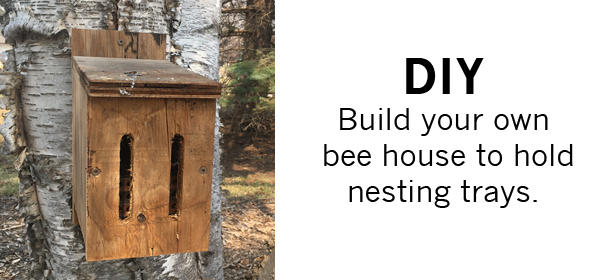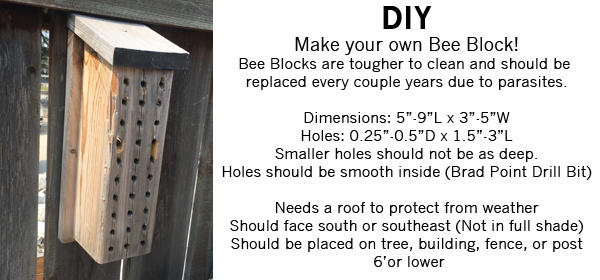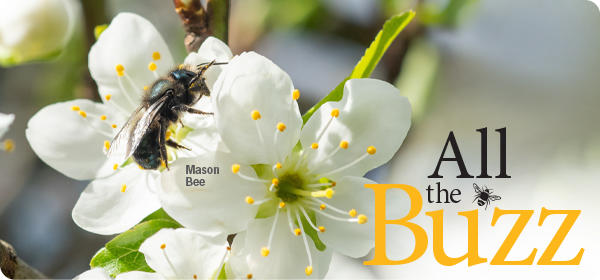Pollinator Week is June 19-25!
Attract MORE Pollinators to Your Yard
Did you know that 1 in every 3 bites of food is made possible by bees? Bees are responsible for pollinating many familiar crops including almonds, apples, coffee, blueberries, squash, and tomatoes. Worldwide there are approximately 20,000 species of bees with about 350 occurring in Manitoba and about 80% of those bees live underground.
Wildlife habitat gardens can support twice as much wildlife as conventional lawns or ornamental non-native plant gardens. Many pollinator populations are in decline, due to the loss of natural habitats and native plantings along with the impact of pesticide use. You can help pollinators survive and flourish by creating a pollinator-friendly environment in your yard. By adding native plants to your yard, you are one step closer to becoming a Certified Wildlife Habitat! Bees are attracted to pink, purple, blue, white, and yellow flowers.
Other ways to attract pollinators other than native plants is by offering them a house or a place to lay eggs. Solitary bees like Mason bees and Leafcutter bees will lay eggs in tunnels, holes, or cracks in trees and other structures. You can purchase Solitary bee houses or you can make your own. For the bees that live underground, leaving spaces of uncovered/undisturbed soil will allow for areas to dig nest tunnels.
Check out the Bee Better Manitoba website to learn more about our local Pollinators!
Bee Houses
Solitary Bee houses or nesting blocks are used to lay eggs. Female bees will collect pollen, create a pollen loaf or ball and lay an egg next to it. Depending on the type of bee, they will build a separation wall with either mud, leaves, or special secretions and start the process again. Bees go through a complete metamorphosis. Meaning it starts with an egg, which then hatches in to a larva, who eats the pollen loaf while growing, and then it will spin its cocoon. In it's cocoon it will turn into a pupa (a pupa looks much like an adult but it lacks color and wings) and then into an adult bee within the cocoon. It will stay in it's cocoon until the following spring or summer depending on the species of bee.
- Bee houses should face south, southeast, or east to catch morning sun and warm up. (Not in full shade)
- Placed on tree, building, fence, or post 6’ or lower
- Houses should also be placed close to food sources. ex: Garden, fruit tree, native plants
- You can also provide Clay or mud below Mason Bee houses as building material for female bees
- Houses must be kept clean. Clean in spring after bees emerge.
- If houses cannot be cleaned: Store house in shed/garage after Bees have emerged(every year or two) for a season to kill all parasites and bacteria. Have a second house and rotate between the two. Houses that are left out uncleaned can have a build-up of bacteria/parasites which can have negative effects on bees using the house.
- Protect your bees from woodpeckers by adding a chicken wire barrier to the front of the bee house. (Large enough for bees to pass through and far enough from nesting tunnels so woodpeckers cannot reach!)
Please give us a call to inquire about current stock and prices. Thanks! (204)667-2161
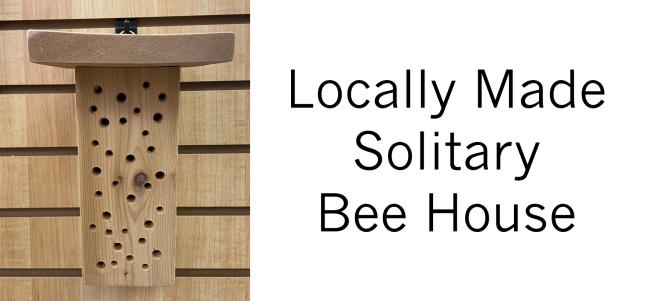
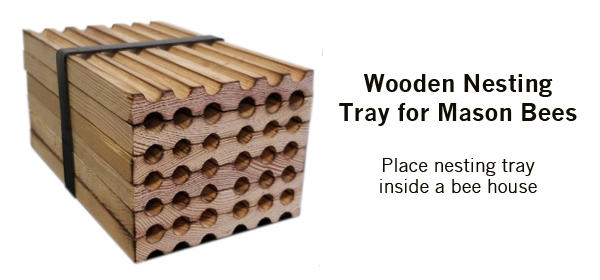
Do-It-Yourself
